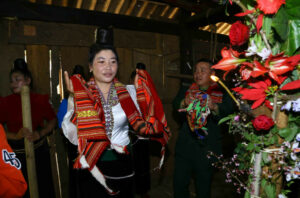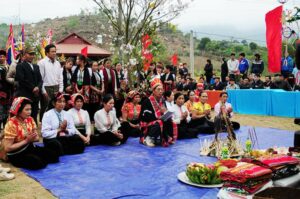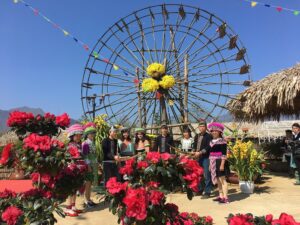Het Cha Festival: Traditions And Spirituality In Moc Chau
Moc Chau, a district in Son La Province, is famous for its vast, beautiful plateau in the Northwest region of Vietnam. The area is known for its cool climate and majestic, poetic natural scenery. In addition, many traditional festivals are celebrated here, contributing to the well-being and prosperity of the community, such as the Hoa Ban Festival, the Rain Worshipping Festival, the Hot Air Balloon Festival, and notably the Het Cha Festival, which is one of the most distinctive.
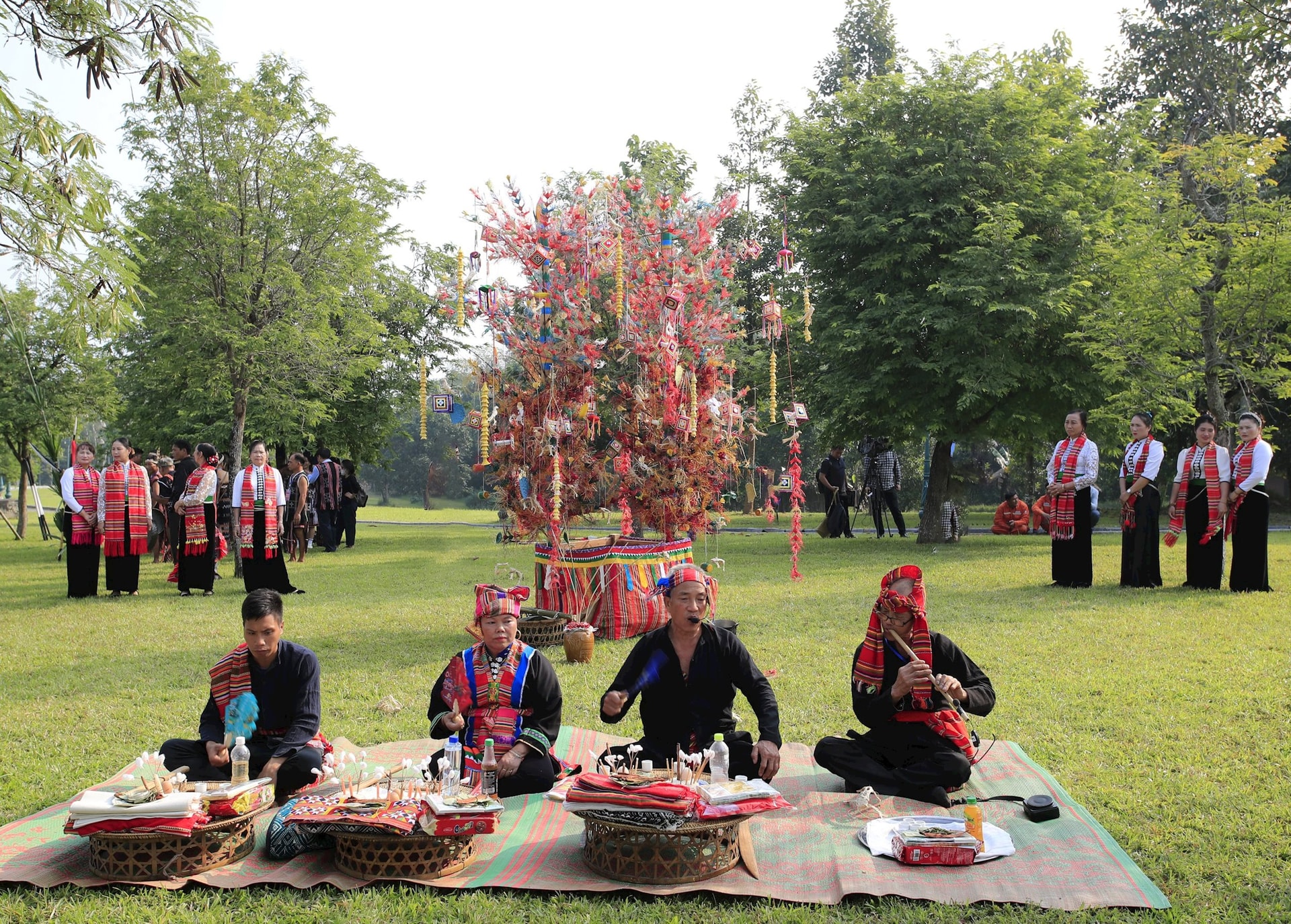
The Thai ethnic people in Moc Chau primarily live off the land, depending on nature for their livelihood, engaging in activities such as hunting, foraging, and farming. During the Het Cha Festival, you can witness artisans from the Thai community reenacting the journey of hunting wild animals, fishing in deep streams, and using buffaloes for plowing fields.
Interspersed with these meticulously staged performances are humorous and witty mime skits that subtly criticize social vices, celebrate beauty, and encourage people to live honestly. Additionally, visitors to the Het Cha Festival can participate in folk games and enjoy the delicious local dishes.
The Het Cha Festival is a unique spiritual and cultural celebration of the Thai people, reflecting the spirit of community solidarity and mutual support in overcoming life’s difficulties. It is also an occasion for the highland people to express their gratitude to the gods, ancestors, and teachers who have helped them. The festival is also a time for prayers for harmony in nature, good weather, bountiful harvests, and the happiness and prosperity of families.
The festival often serves as a matchmaking event, where many couples find their partners.
The Legend of the Het Cha Festival
According to legend, the Thai people in Moc Chau were once very poor. They couldn’t afford medicine for illnesses and would seek help from local shamans. The shamans used folk remedies and asked the gods for help, successfully curing the villagers’ illnesses.
To honor the shaman who helped them, many villagers became adopted children of the shaman. On the last days of the lunar year (29th or 30th), the adopted children and grandchildren of the shaman would visit him to offer thanks. However, since these were busy days preparing for the Lunar New Year, the shaman declared that the thanksgiving ceremony would be postponed and held every March.
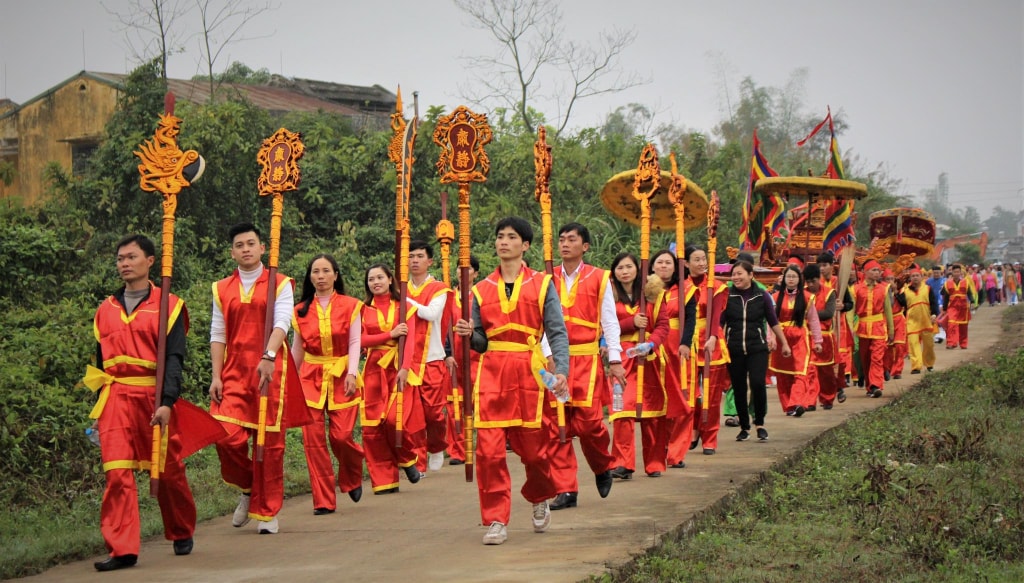
Thus, the Het Cha Festival was born. Through this festival, the shamans transmitted the messages of the gods to the people. The Het Cha Festival is an important cultural and spiritual event for the Thai people in Moc Chau, viewed as a celebration of community unity, helping each other in times of hardship, and growing and thriving together.
Discover the Unique Features of the Het Cha Festival
The Rituals of the Het Cha Festival
The ritual portion of the Het Cha Festival is a time for the adopted children of the shaman to express their deep gratitude to the shaman who healed them. It highlights the humanistic values and the profound tradition of “drinking water, remembering its source.”
Afterward, prayers are made for good weather, prosperous lives, abundant crops, and peaceful living, accompanied by sharing agricultural knowledge passed down by the elders. The people listen to advice from the experienced to live harmoniously with one another, urging everyone to live honestly and love each other.
The Festivities of the Het Cha Festival
After the ritual and the offering of flowers, the most anticipated part of the festival begins – the festive activities. This part is enjoyed the most by the youth and local villagers.
The festival’s festivities feature familiar and fun folk games. People join in not only for entertainment but also to pass down knowledge about clearing fields, farming, and the water rice civilization, which is a characteristic of the Thai ethnic group.
Interspersed within the festivities are humorous mime performances that subtly criticize social flaws, encouraging good deeds and promoting beauty in life. There will also be traditional dances performed by village girls, with graceful and delicate xoe dances, harmonizing with the sounds of drums and gongs, filling the air with a lively atmosphere. The music ranges from soft to upbeat, like a welcoming melody for all those attending the Het Cha Festival.
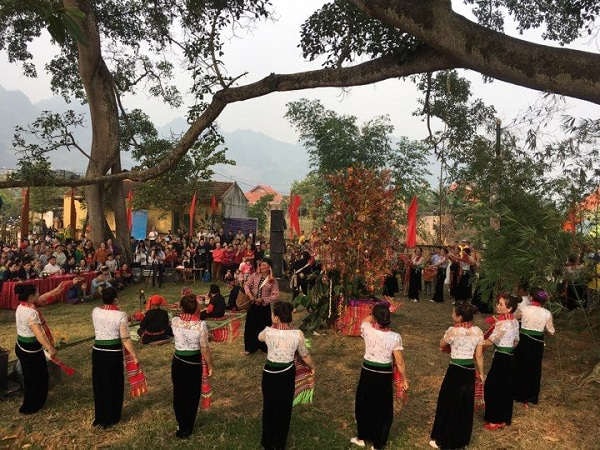
With two typical flowers of the Northwest mountains, ban flowers and plum blossoms, as well as shapes of animals, birds, cicadas, bees, drums, and gongs in vibrant colors, the festival symbolizes life and the blossoming of spring.
The festivities also include various entertaining activities such as the xoe dance competition, traditional dishes contest, walking on stilts, and other fun games in different areas.
The Het Cha Festival is highly valued by the Thai ethnic group. They aim to preserve and promote their long-standing traditions and ensure that future generations understand the customs passed down from their ancestors.
Through the Het Cha Festival, they also wish to introduce their traditional celebrations to domestic and international friends. It is a way to foster cultural exchange and deepen friendships through the shared joy and conversations during the festival.
